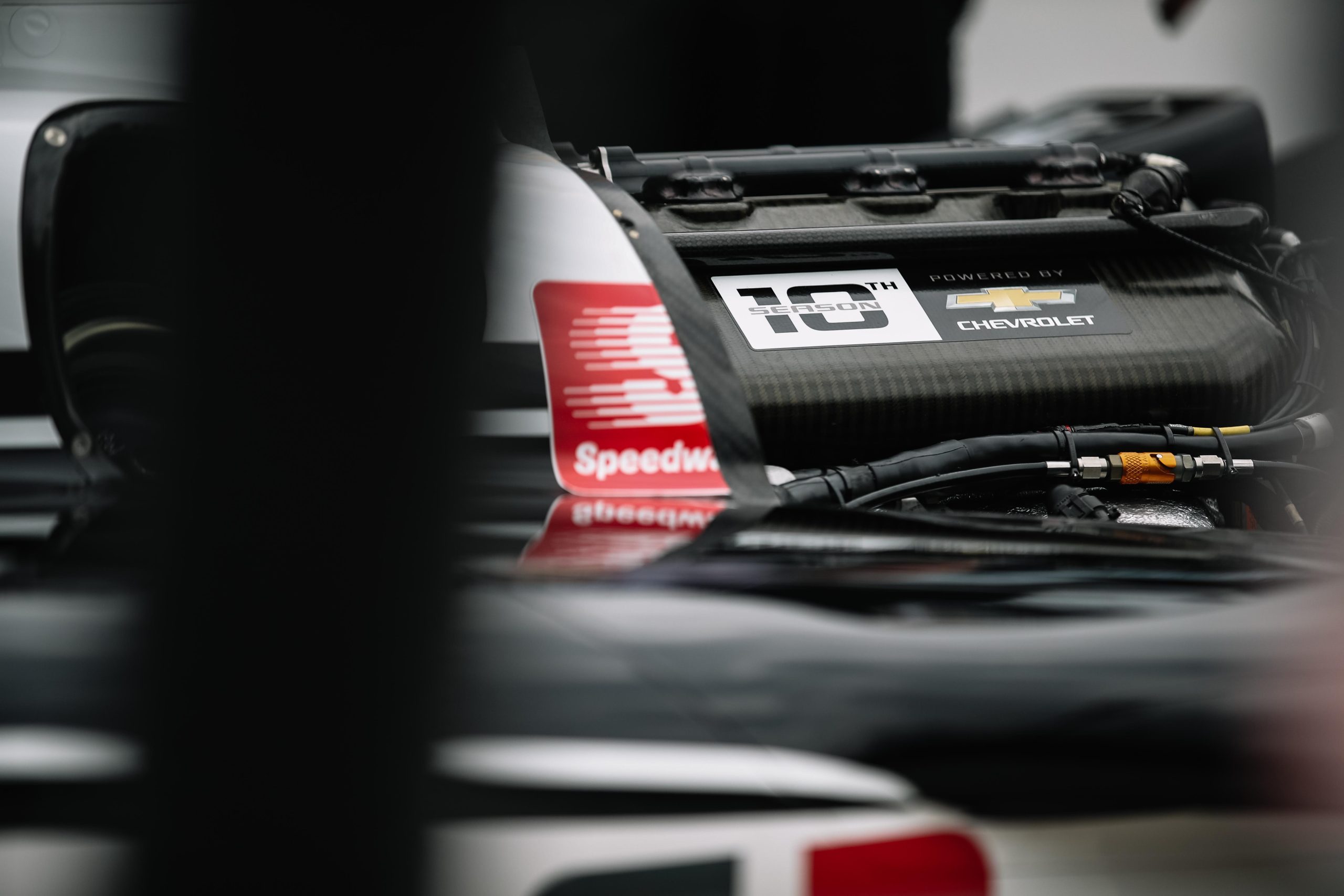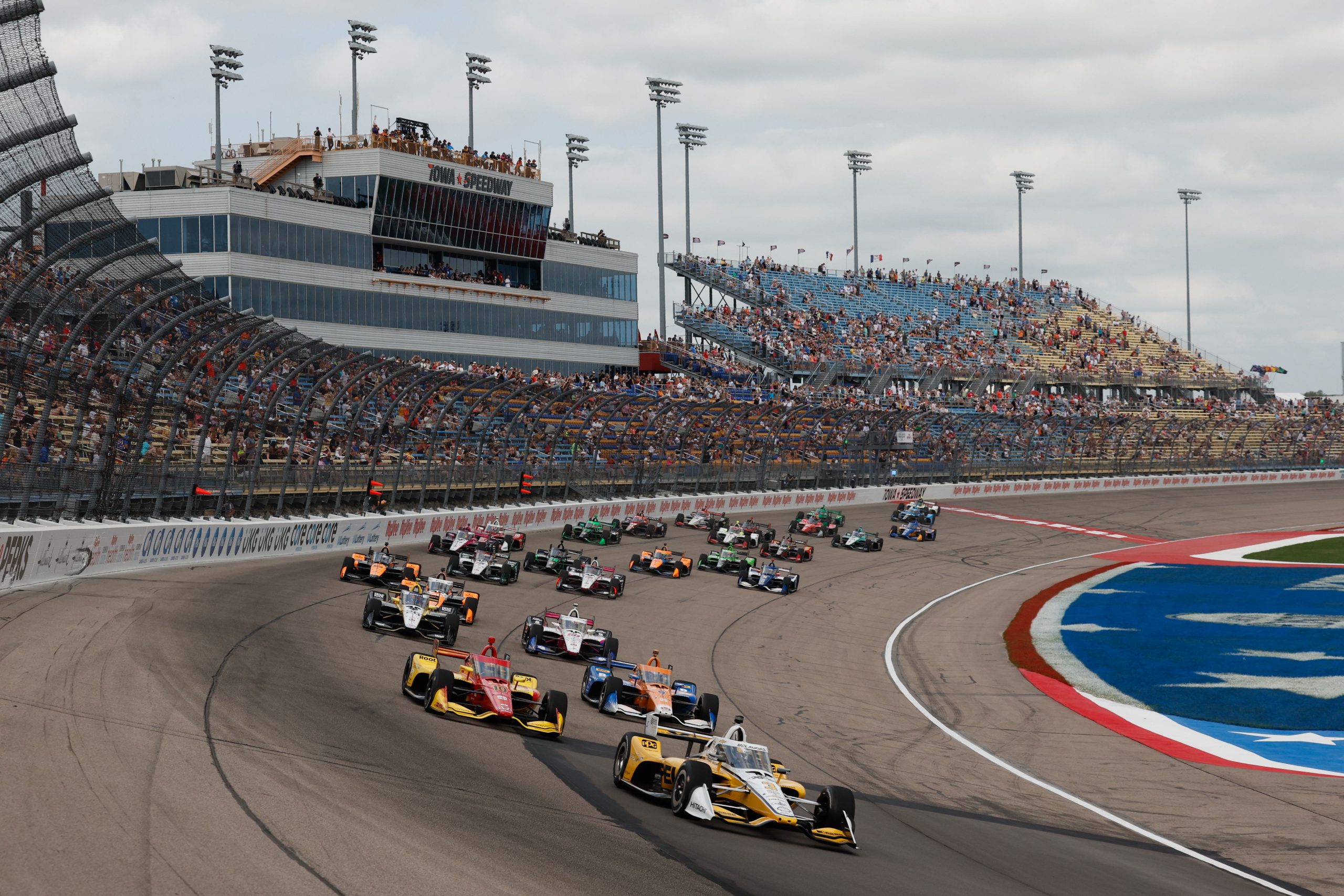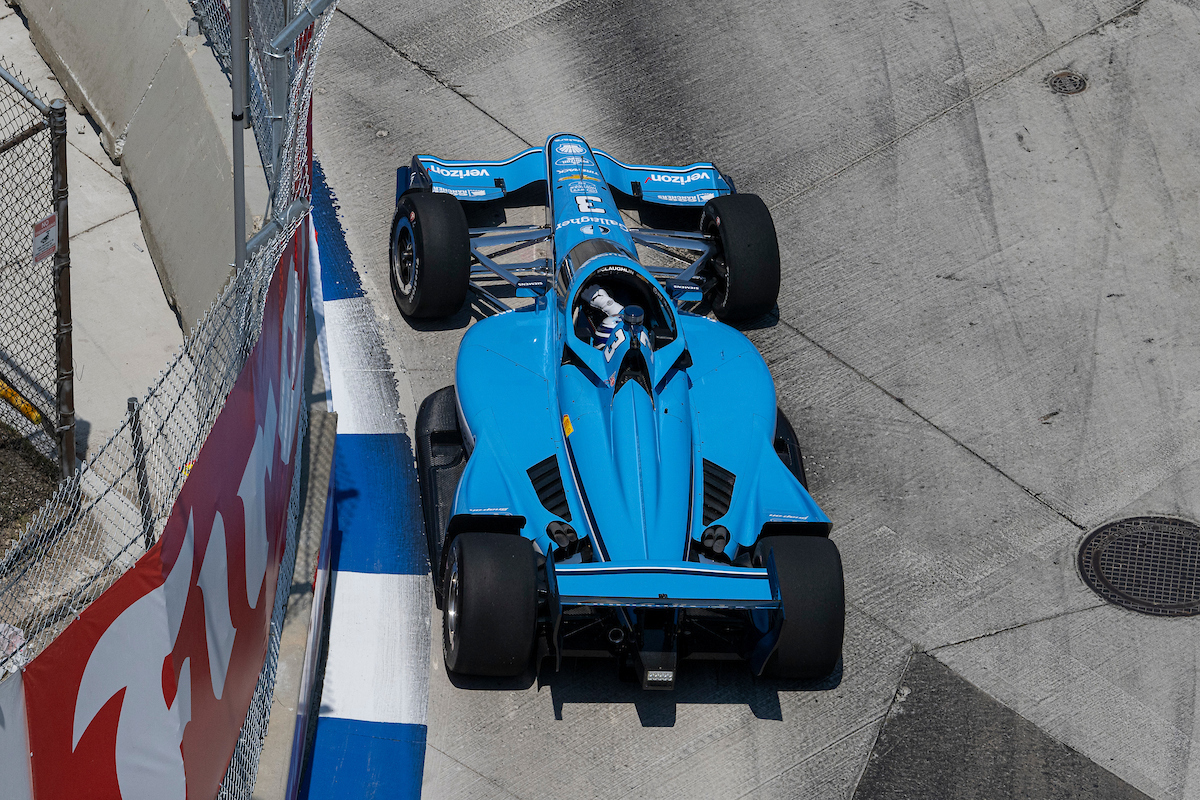Buying an Indycar Engine: Everything You Need to Know


When it comes to buying an IndyCar engine, there are several key factors to consider, including the manufacturer, model, and cost. Each manufacturer has its own strengths and weaknesses, and it’s important to choose an engine that fits your specific needs and budget. Additionally, it’s important to consider the performance and efficiency of the engine, as well as the rules and regulations of IndyCar racing.
Key Takeaways
- IndyCar engines are high-performance race car engines that require advanced features such as direct fuel injection and variable valve timing.
- When buying an IndyCar engine, it’s important to consider factors such as the manufacturer, model, cost, performance, and efficiency.
- It’s also important to be aware of the rules and regulations of IndyCar racing, including the use of ethanol fuel and other technical specifications.
Table of Contents
IndyCar Engine Basics
IndyCar Engine Specifications
IndyCar engines are highly specialized, high-performance powerplants designed to deliver the speed and power required for competitive racing. These engines are built to strict specifications set by the Indy Racing League, and must meet certain requirements in terms of displacement, weight, and other factors.
The current IndyCar engine formula calls for a 2.2-liter, twin-turbocharged V6 engine that produces approximately 700 horsepower. These engines are built by two manufacturers: Honda and Chevrolet.
Turbocharged V6 Engine
The turbocharged V6 engine used in IndyCar racing is a highly advanced piece of machinery. It features a compact, lightweight design that allows it to produce high levels of power while still meeting the strict weight limits set by the Indy Racing League.
One of the key advantages of a turbocharged engine is its ability to produce more power than a naturally aspirated engine of the same size. This is because the turbocharger compresses the air entering the engine, allowing more fuel to be burned and more power to be produced.
Engine Lifespan in Racing
The lifespan of an IndyCar engine is relatively short compared to a typical passenger car engine. These engines are designed to last for approximately 2,500 miles of racing before they need to be replaced.
This is because IndyCar engines are subjected to extreme conditions during racing, including high speeds, high temperatures, and high levels of vibration. These conditions can cause significant wear and tear on the engine components, leading to decreased performance and reliability over time.
Engine Performance Testing
IndyCar engines are subjected to rigorous performance testing before they are approved for use in racing. These tests include dyno testing, which measures the engine’s horsepower and torque output, as well as endurance testing, which simulates the conditions of a race to ensure the engine can withstand the rigors of competition.
In addition to these tests, IndyCar engines are also subject to strict rules regarding fuel consumption and emissions. These rules help to ensure that the engines are not only powerful and reliable, but also environmentally friendly.
Overall, IndyCar engines are highly specialized pieces of machinery that are designed to deliver the speed and power required for competitive racing. With their advanced technology and strict specifications, these engines are a key component of the IndyCar racing experience.
Key IndyCar Engine Manufacturers
IndyCar engines are the heart of any IndyCar race car, and they play a crucial role in determining the performance of the car. There are a few key manufacturers that dominate the IndyCar engine market, and each has its unique strengths and weaknesses.
Honda IndyCar Engine
Honda is one of the most prominent IndyCar engine manufacturers, and its engines have been used by many successful teams in the series. Honda has been a part of the IndyCar series since 2003 and has won multiple championships since then.
Honda IndyCar engines are known for their reliability and efficiency. They are also highly customizable, allowing teams to fine-tune the engine to their specific needs. Honda engines are also known for their fuel efficiency, which is a significant advantage in a sport where fuel consumption plays a crucial role.

Chevrolet IndyCar Engine
Chevrolet is another prominent IndyCar engine manufacturer. Its engines have been used by many successful teams, and it has won multiple championships in the series.
Chevrolet IndyCar engines are known for their power and speed. They are also highly customizable, allowing teams to fine-tune the engine to their specific needs. Chevrolet engines are also known for their durability, which is a significant advantage in a sport where engines are pushed to the limit.

Race Engine Suppliers
Apart from Honda and Chevrolet, there are also other race engine suppliers that provided engines to IndyCar teams in the past. These suppliers include Ilmor, Cosworth, and AER.
Ilmor is a British engineering company that has been involved in motorsports since the 1980s. It has supplied engines to many successful IndyCar teams, including Penske Racing.
Cosworth is another British engineering company that has been involved in motorsports since the 1950s. It has supplied engines to many successful IndyCar teams, including Newman/Haas Racing.
AER is an American engineering company that specializes in building high-performance engines for motorsports. It has supplied engines to many successful IndyCar teams, including Andretti Autosport.
In conclusion, there are a few key IndyCar engine manufacturers that dominate the market, including Honda and Chevrolet. However, there are also other race engine suppliers that provide engines to IndyCar teams, including Ilmor, Cosworth, and AER. Each manufacturer has its unique strengths and weaknesses, and teams must choose the engine that best suits their needs.
Buying an IndyCar Engine
Engine Cost
When it comes to buying an IndyCar engine, cost is a major factor to consider. The price of a new engine can range from $125,000 to $225,000, depending on the manufacturer and model. However, teams can also opt for a used engine, which can cost significantly less. It’s important to note that a used engine may have more wear and tear, and may require more maintenance and repairs.
Engine Maintenance
Maintaining an IndyCar engine is crucial to ensuring its longevity and performance. Regular oil changes, filter replacements, and inspections are necessary to keep the engine running smoothly. Teams should also have a backup engine on hand in case of any issues with the primary engine. In addition, it’s important to follow the manufacturer’s recommended maintenance schedule and guidelines.
Engine Teardown and Inspection
Before purchasing a used engine, it’s important to perform a thorough teardown and inspection. This involves disassembling the engine and inspecting each component for wear and damage. Teams can also send the engine to a professional engine builder for inspection and testing. This process can help identify any potential issues with the engine and determine if it’s a worthwhile investment.
Overall, buying an IndyCar engine requires careful consideration of cost, maintenance, and inspection. Teams should weigh the pros and cons of a new versus used engine, and ensure that proper maintenance and inspections are performed to maintain optimal performance.
Performance and Efficiency of an IndyCar Engine
IndyCar Engine Power
IndyCar engines are known for their high power output, which is essential for these cars to reach speeds of up to 240 mph. The current engine formula for the IndyCar series is a 2.2-liter, twin-turbocharged V6 engine that produces around 650 horsepower. This power is achieved through a combination of factors, including the engine’s design, the use of turbochargers, and the use of high-octane racing fuel.
Fuel Efficiency in Racing
While IndyCar engines are designed for maximum power output, they also need to be fuel-efficient to ensure that they can complete races without needing to refuel. Fuel efficiency is achieved through a number of factors, including the engine’s design, the use of lightweight materials, and the use of advanced fuel injection systems.
In recent years, the IndyCar series has introduced regulations aimed at improving fuel efficiency, including the use of a single turbocharger and the introduction of hybrid power units. These changes have led to significant improvements in fuel efficiency, with some cars now able to complete entire races without needing to refuel.
Engine Tuning
One of the key factors in achieving maximum performance and efficiency from an IndyCar engine is engine tuning. Engine tuning involves adjusting various parameters such as fuel injection timing, ignition timing, and turbocharger boost pressure to optimize the engine’s performance for a specific track and racing conditions.
Engine tuning is a complex process that requires a high level of expertise and experience. Teams will often spend hours fine-tuning their engines to ensure that they are running at peak performance, and even small adjustments can have a significant impact on the engine’s power output and fuel efficiency.
In conclusion, IndyCar engines are designed to deliver high levels of power and efficiency, and achieving maximum performance requires a combination of factors, including engine design, fuel efficiency, and engine tuning. Teams that can successfully optimize these factors are more likely to achieve success on the track.
IndyCar Technology and Engineering
Vehicle Dynamics
IndyCar racing is all about speed and handling. The vehicles are designed to be lightweight and aerodynamic, with a low center of gravity to improve handling. The suspension system is also optimized for high-speed cornering, with a focus on minimizing body roll and maximizing grip.
The tires used in IndyCar racing are specially designed to provide maximum grip and durability, with a tread pattern that is optimized for high-speed cornering. The tires are also subjected to rigorous testing to ensure that they can withstand the extreme forces generated by the high-speed racing.
Aerodynamics in IndyCar
Aerodynamics plays a crucial role in IndyCar racing, with the vehicles designed to minimize drag and maximize downforce. The front and rear wings are carefully designed to provide the necessary downforce to keep the vehicle stable at high speeds, while the underbody is designed to create a low-pressure zone that helps to suck the vehicle down onto the track.
The aerodynamics of the vehicle are also carefully tuned to ensure that the air flows smoothly over the bodywork, reducing turbulence and minimizing drag. This is achieved through the use of carefully designed bodywork and the use of computational fluid dynamics (CFD) simulations to optimize the vehicle’s aerodynamic performance.
Motorsport Engineering
IndyCar racing is a highly competitive sport, with teams constantly looking for ways to gain an advantage over their rivals. As a result, motorsport engineering plays a crucial role in the development of IndyCar engines and vehicles.
Engineers use a variety of tools and techniques to optimize the performance of the engines, including computer simulations, wind tunnel testing, and track testing. The engines themselves are highly advanced, with features such as direct injection, variable valve timing, and turbocharging all used to maximize power and efficiency.
In addition to the engine, the vehicle’s drivetrain, suspension, and brakes are also carefully engineered to provide maximum performance and reliability. This requires a deep understanding of materials science, mechanical engineering, and electronics, as well as a willingness to constantly innovate and push the boundaries of what is possible.
Overall, IndyCar racing is a highly technical and demanding sport, requiring a deep understanding of vehicle dynamics, aerodynamics, and motorsport engineering. With teams constantly pushing the limits of what is possible, the sport is sure to continue evolving and pushing the boundaries of what is possible in the world of motorsport.
Rules and Regulations of IndyCar Engines
IndyCar engines are highly regulated to ensure fair competition and safety for all drivers. The rules and regulations regarding IndyCar engines are set forth by the IndyCar sanctioning body and must be followed by all teams and manufacturers.
Engine Specifications
IndyCar engines are required to meet strict specifications to ensure fair competition. The current engine formula allows for a maximum of 2.2 liters of displacement and a maximum of six cylinders. Turbocharging is also allowed, but the maximum boost pressure is limited to 1.5 bar.
Engine Control Unit
All IndyCar engines must use a standardized Engine Control Unit (ECU) provided by the series. The ECU controls engine performance and ensures compliance with the rules and regulations.
Engine Mileage
To control costs, IndyCar engines are subject to a mileage limit. Each engine must last for a minimum of 2500 miles before it must be replaced. Teams are allowed to change engines during the season, but they will incur a penalty if they exceed the mileage limit.
Engine Manufacturer
IndyCar engines are supplied by two manufacturers: Honda and Chevrolet. Each manufacturer is allowed to supply engines to a maximum of 17 entries per season.
Engine Homologation
IndyCar engines must be homologated by the series before they can be used in competition. This process ensures that each engine meets the required specifications and is compliant with the rules and regulations.
In summary, IndyCar engines are highly regulated to ensure fair competition and safety for all drivers. Engine specifications, control units, mileage limits, manufacturers, and homologation are all carefully monitored by the series to maintain a level playing field.
IndyCar Speed and Racecar Preparation
To achieve top IndyCar speed, it’s crucial to have a well-prepared racecar that is equipped with reliable motorsport equipment. Racecar preparation is a complex process that requires attention to detail and a thorough understanding of the racing engine’s reliability.
To start, it’s important to choose a racing engine that is specifically designed for IndyCar racing. These engines are typically built to withstand high speeds and intense conditions, making them ideal for racing. It’s also important to consider the engine’s reliability, as a breakdown during a race can be costly and dangerous.
Once the engine is selected, it’s time to prepare the racecar for competition. This includes ensuring that the car is properly balanced and aerodynamic, as well as installing the necessary safety equipment. Race teams may also experiment with different setups to find the optimal configuration for their particular car and driver.
During the race, the team will need to monitor the engine’s performance closely to ensure that it remains reliable and performs at its best. This may involve making adjustments to the engine’s tuning or cooling system, as well as monitoring the car’s tire wear and fuel consumption.
Overall, achieving top IndyCar speed requires a combination of reliable motorsport equipment, expert racecar preparation, and a skilled driver. With the right approach, a team can maximize their chances of success on the track.
Ethanol Fuel in IndyCar Racing
IndyCar Racing has been using ethanol fuel since 2007, making it the first major racing series to use a renewable fuel. Ethanol is an alcohol-based fuel made from corn and other grains, and it has become a popular alternative to traditional gasoline in the racing world due to its high octane rating and lower emissions.
Ethanol fuel has several benefits in IndyCar Racing. It burns cleaner than gasoline, which means it produces fewer emissions and is better for the environment. It also has a higher octane rating than gasoline, which allows engines to run at higher compression ratios and produce more power.
In addition to its performance benefits, ethanol fuel is also more cost-effective than gasoline. Although the price of ethanol can vary depending on the market, it is generally less expensive than gasoline, which can save teams a significant amount of money over the course of a season.
Despite its benefits, ethanol fuel does have some drawbacks. One of the main concerns is that it can be more corrosive than gasoline, which can lead to increased wear and tear on engine components. To combat this, IndyCar teams must take extra precautions to protect their engines, such as using specialized lubricants and materials.
Overall, ethanol fuel has been a positive addition to IndyCar Racing. It has helped to reduce emissions and improve performance while also providing cost savings for teams. As the racing world continues to look for ways to become more sustainable, ethanol fuel will likely play an increasingly important role in the future of motorsports.
Buying an Indycar Engine – Frequently Asked Questions
What are the current specs for an IndyCar engine in 2023?
As of 2023, the IndyCar engine specifications require a 2.2-liter, twin-turbocharged V6 engine capable of producing approximately 700 horsepower. The engine must also meet strict fuel efficiency and durability standards.
Who are the top manufacturers of IndyCar engines?
The two main engine manufacturers for IndyCar are Honda and Chevrolet. Both companies have a long history of producing high-performance engines for racing and have been involved in IndyCar racing for many years.
What is the average lifespan of an IndyCar engine?
The lifespan of an IndyCar engine varies depending on how it is used and maintained. On average, an IndyCar engine can last for around 2,500 miles before it needs to be rebuilt or replaced. However, some teams may choose to replace their engines more frequently to ensure maximum performance.
How much does it cost to purchase an IndyCar engine?
The cost of an IndyCar engine can vary depending on the manufacturer and the specific engine model. On average, an IndyCar engine can cost anywhere from $100,000 to $150,000. However, this price does not include the cost of installation or ongoing maintenance.
Are there any restrictions on who can buy an IndyCar engine?
There are no restrictions on who can purchase an IndyCar engine. However, only teams that are registered with the IndyCar series are allowed to compete in official races.
What is the difference in cost between an IndyCar engine and an F1 engine?
The cost of an F1 engine can be significantly higher than that of an IndyCar engine. F1 engines are highly specialized and require a lot of research and development to produce. On average, an F1 engine can cost anywhere from $10 million to $15 million. In contrast, an IndyCar engine is much more affordable, with an average cost of around $100,000 to $150,000.










